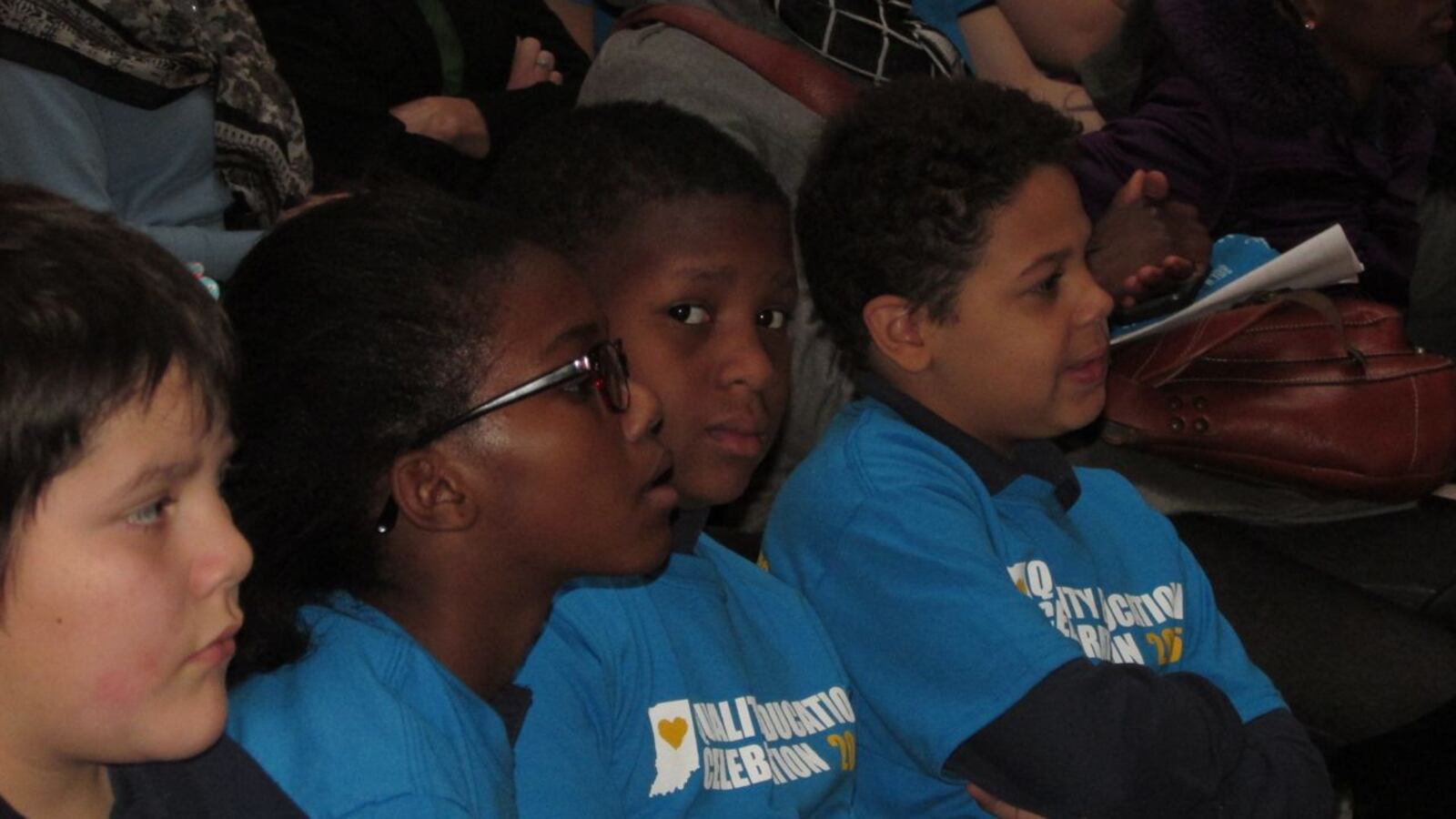This could be the year that Indiana eclipses Wisconsin for the most general education students attending private schools using publicly funded tuition vouchers.
When it launched in 2011, Indiana’s voucher program had the broadest eligibility requirements in the nation and it grew quickly: from about 4,000 the first year to 9,000 the second year and 20,000 the third year. Last year, the program served about 29,100 students using vouchers to attend private schools.
The pro-voucher Institute for Quality Education reported last week that information it obtained from the Indiana Department of Education showed 32,955 students applied to use vouchers this year, which would be a gain of more than 3,800, or about 13 percent.
Final voucher numbers for 2014-15 weren’t released until February but they tracked very closely to the number of students who applied the prior summer. So it’s likely the final number of students using vouchers will be close to 33,000.
Indiana’s voucher program, has grown at lightning speed and fell just short of passing Wisconsin last year as the largest voucher program for general education students in the country. Wisconsin had 29,609 students using vouchers. New numbers for that state aren’t yet available for the current school year.
From the very beginning, the voucher program in Indiana allowed qualifying students anywhere in the state to access tax dollars that had been set aside for their public school educations and use the money to pay private school tuition. Vouchers in Indiana are not restricted to just students who live in cities with low-scoring school districts or attend schools with poor academic performance, as they are in other places.
The original income limits of the program allowed middle income families who earn up to $62,000 for a family of four to to access vouchers at 50 percent of the amount that poorer families could receive. (Families of four with incomes of $42,000 or less could qualify to spend up to 90 percent of the state aid set aside their public school education on private school tuition.) New laws have since allowed children of parents who initially qualified only to see their incomes grow to keep their vouchers.
Indiana’s rapid growth continued after eligibility rules were widened even more.
An enrollment cap from the first two years was lifted as was a requirement that students must first try out a public school in their neighborhood before they used a scholarship. New rules also allowed siblings, students qualifying for special education services and students who live within the boundary of a failing school to use vouchers.
Vouchers were born in Milwaukee in 1990 and grew slowly for more than two decades. Wisconsin expanded vouchers to other parts of the state in 2013. Ohio also has a large program that has been expanded statewide. Some states, notably Florida, have voucher programs that target particular groups of students, such as disabled children.
Vouchers, billed by the state as “choice scholarships,” are controversial. Proponents say they expand quality options for poor children, and opponents say the state shouldn’t use tax dollars to pay for private, mostly religious, schools while draining the coffers of public schools.
“The continued growth of Indiana’s school voucher program is proof that parents want school choice,” said the institute’s president, Betsy Wiley.


